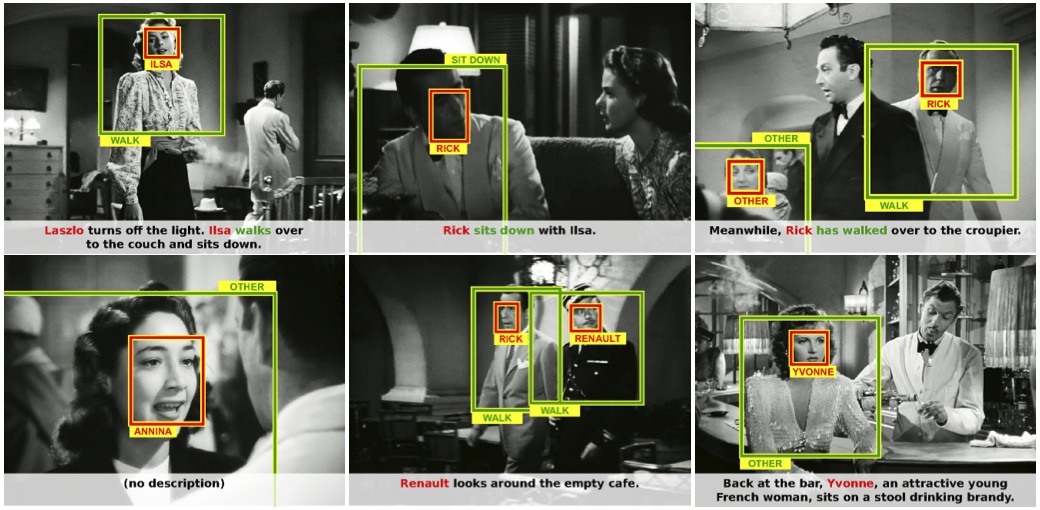Section: New Results
Human activity capture and classification
Layered Segmentation of People in Stereoscopic Movies
Participants : Karteek Alahari, Guillaume Seguin, Josef Sivic, Ivan Laptev.
In this work we seek to obtain a pixel-wise segmentation and pose estimation of multiple people in a stereoscopic video. This involves challenges such as dealing with unconstrained stereoscopic video, non-stationary cameras, and complex indoor and outdoor dynamic scenes. The contributions of our work are two-fold: First, we develop a segmentation model incorporating person detection, pose estimation, as well as colour, motion, and disparity cues. Our new model explicitly represents depth ordering and occlusion. Second, we introduce a stereoscopic dataset with frames extracted from feature-length movies “StreetDance 3D" and “Pina". The dataset contains 2727 realistic stereo pairs and includes annotation of human poses, person bounding boxes, and pixel-wise segmentations for hundreds of people. The dataset is composed of indoor and outdoor scenes depicting multiple people with frequent occlusions. We demonstrate results on our new challenging dataset, as well as on the H2view dataset from (Sheasby et al. ACCV 2012). This work has been published at ICCV 2013 [1] .
Finding Actors and Actions in Movies
Participants : Piotr Bojanowski, Francis Bach [Inria Sierra] , Ivan Laptev, Jean Ponce, Cordelia Schmid [Inria Lear] , Josef Sivic.
We address the problem of learning a joint model of actors and actions in movies using weak supervision provided by scripts. Specifically, we extract actor/action pairs from the script and use them as constraints in a discriminative clustering framework. The corresponding optimization problem is formulated as a quadratic program under linear constraints. People in video are represented by automatically extracted and tracked faces together with corresponding motion features. First, we apply the proposed framework to the task of learning names of characters in the movie and demonstrate significant improvements over previous methods used for this task. Second, we explore the joint actor/action constraint and show its advantage for weakly supervised action learning. We validate our method in the challenging setting of localizing and recognizing characters and their actions in feature length movies Casablanca and American Beauty. This work has been published at ICCV 2013 [2] and example results are shown in figure 6 . The corresponding software has been also made publicly available (see the software section of this report).
|
Highly-Efficient Video Features for Action Recognition and Counting
Participants : Vadim Kantorov, Ivan Laptev.
Local video features provide state-of-the-art performance for action recognition. While the accuracy of action recognition has been steadily improved over the recent years, the low speed of feature extraction remains to be a major bottleneck preventing current methods from addressing large-scale applications. In this work we demonstrate that local video features can be computed very efficiently by exploiting motion information readily-available from standard video compression schemes. We show experimentally that the use of sparse motion vectors provided by the video compression improves the speed of existing optical-flow based methods by two orders of magnitude while resulting in limited drops of recognition performance. Building on this representation, we next address the problem of event counting in video and present a method providing accurate counts of human actions and enabling to process 100 years of video on a modest computer cluster. This work has been submitted to CVPR 2014.


